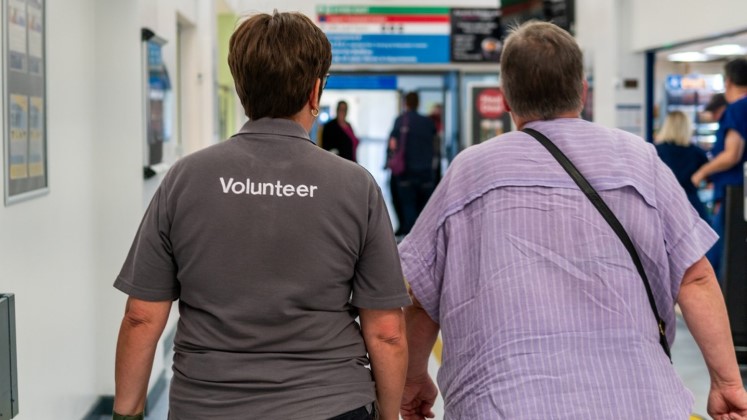 Last week, President Trump declared America’s opioid crisis to be a “public health emergency”, announcing measures to tackle the problem including expanding access to treatment. John Collins writes that, in a positive and perhaps surprising move, in its interim report, Trump’s Commission did not mention drug courts, a politically popular approach to tackling substance-abuse. He argues that drug courts, far from being a key intervention, are frequently costly, inefficient and merely solidify an inappropriate reliance on the criminal justice system to manage what has always been a public health issue.
Last week, President Trump declared America’s opioid crisis to be a “public health emergency”, announcing measures to tackle the problem including expanding access to treatment. John Collins writes that, in a positive and perhaps surprising move, in its interim report, Trump’s Commission did not mention drug courts, a politically popular approach to tackling substance-abuse. He argues that drug courts, far from being a key intervention, are frequently costly, inefficient and merely solidify an inappropriate reliance on the criminal justice system to manage what has always been a public health issue.
John Collins will be speaking at the LSE Event, “Militarisation and the “War on Crime” at 6:30pm on Tuesday, 7 November, 2017. More details and ticket information.
No one should underestimate the opioid problem facing the United States. As the White House’s Commission on Combating Drug Addiction and the Opioid Crisis highlighted in its interim report to the President in July, opioid overdoses have quadrupled since 1999 “[w]ith approximately 142 Americans dying every day, America is enduring a death toll equal to Sept. 11 every three weeks”. Following decades where the opioid (specifically heroin) problem appeared to be in decline, there has been a sudden and radical resurgence in morbidity, mortality and quality of life indicators.
Meanwhile, public policies, still recovering from the negative outcomes of the “war on drugs” of the 1970s, 80s and 90s, are drastically underdeveloped and have left the US Government underequipped to manage current problems. In the midst of all this, the public and many elected officials are demanding strong action. Despite a recommendation of his own commission in July to declare a national emergency to begin to tackle the crisis, the Trump administration did precisely nothing for a further three months, initially resorting to hollow platitudes about border enforcement and the role of the US’ neighbours in enabling the trade, without in any way acknowledging the home-grown nature of the current use epidemic.
Now that President Trump has declared a public health emergency, critics are quick to point out that it doesn’t go far enough and is currently unfunded. Although Congress bears significant responsibility for its own aversion to expanding public health services and the other mechanisms highlighted by the President’s Opioid Commission, key questions can at least be asked about where emergency resources should be directed. The President’s Commission provides some useful points of direction. in particular, lessening the enormous gap between treatment coverage and need. As the Commission highlights:
only 10 percent of the nearly 21 million citizens with a substance use disorder (SUD) receive any type of specialty treatment according to the most recent National Survey on Drug Use and Health.
Nevertheless, civil rights advocates are right to point out a fundamental difference between policy responses to this epidemic and to previous ones – that the median user is increasingly perceived as white and middle class. This, they correctly highlight, is manifest in a quick recourse to public health narratives grounded in a greater respect for the individual. Poorer, minority, inner city communities, so often ground zero of the crack epidemic of the 1980s, were targeted for aggressive policing and incarceration practices. These did little to quell the problems associated with drugs but greatly exacerbated the generational impacts of the drug markets through mass incarceration and the spread of HIV/AIDS as public health policies were shunned.
Regardless, the policies outlined in President’s Commission (even if the President himself is slow to heed them) include useful steps forward. In particular:
- Expanding access to treatment coverage by, for example, granting “waiver approvals for all 50 states to quickly eliminate barriers to treatment resulting from the federal Institutes for Mental Diseases DRAFT 3 (IMD) exclusion within the Medicaid program. This will immediately open treatment to thousands of Americans in existing facilities in all 50 states.”
- Mandating prescriber training as a form of prevention.
- Drastically expanding access to Medication Assisted Treatment (MAT) such as Methadone, Buprenorphine and others based on a criteria of “what is best for the patient” rather than the mistaken “prevalent belief that use of MAT does not constitute true recovery or sobriety.”
- Rapidly expanding access to the overdose reversal drug, Naloxone and equipping “all law enforcement in the United States with naloxone to save lives.”
Others are included, but in the context of such a wide treatment gap and a lack of political understanding about key treatment modalities such MAT and a powerful overdose reversal medicine, these points particularly stick out.
Drug courts are still not the answer
What was also positive and surprising was the lack of mention of more problematic interventions which, despite very questionable return on investment, remain politically popular. In particular, Drug Courts, or Drug Treatment Courts. A number of recent press responses have highlighted these as a key intervention in the opioid crisis and painted the evidence as stellar and clear. As Fred R Conrad recently argued in the Guardian, they give families “a second chance”. Further, the US government has long been actively exporting them to other countries as a model intervention, regardless of local needs. In the US, drug courts can be described as:
specialized court dockets, or portions of judges’ calendars of cases, that generally target nonviolent offenders with substance-abuse problems. These programs provide offenders with intensive court supervision, mandatory drug testing, substance-abuse treatment, and other social services as an alternative to adjudication or incarceration…to break the cycle of substance abuse, addiction, and crime by changing the behavior of substance-abusing offenders.
Drug courts remain a simultaneously popular, controversial, expensive and problematic intervention. Further, the evidence used to support them is too often incomplete, misrepresented or else based on anecdote. As a recent advocacy article by Newt Gingrich and Van Jones argued, “[t]here are over 3,000 treatment courts in the United States, according to The National Association of Drug Court Professionals, and they help about 150,000 people go into addiction treatment each year.”
Their statement points to a number of key criticisms of drug courts as a model. Firstly, for treatment to be ethical and effective it should be voluntary rather than coerced. The goal is to provide a range of social and treatment services which enable individuals with substance use disorders to get help before they are forced into legal trouble. The idea of courts “helping” people into treatment is fundamentally at odds with increasingly prevalent norms of human rights and public health-based approaches to treatment. Further, it is, at an aggregate level, simply inefficient. The expense of administering an individual’s treatment regimen via a costly labour intensive legal process comes at the large opportunity cost of investing in genuinely accessible and voluntary community-based treatment services. Simultaneously, by UN estimates, 90 percent of people who use drugs do not do so problematically and thereby do not require treatment. Drug courts have been criticised for pushing individuals into scarce treatment services for which they have no medical need. In so doing Drug Courts can reduce the availability of treatment services of those seeking them.

“Courtroom One Gavel” by Joe Gratz is licensed under CC0 Public Domain.
A number of studies have highlighted, there is a “general propensity for drug courts to target lower-risk offenders who would otherwise end up on probation”. The outcome is driven by a desire to show positive results and thereby select the most likely applicants to complete the drug court, even if in many cases they don’t meet basic clinical criteria of being drug-dependent. Further, given their stated aim of reducing incarceration a 2013 meta-analysis found that while they may have an impact on recidivism of roughly 10 percent in certain groups (a figure which other scholars dispute based on the quality of data available), but minimal impacts on others, “Drug courts do not reduce the aggregate amount of time that offenders spend behind bars.”
Ideology, not medically, based treatments
A broader concern as it relates to best practice opioid treatment rests with the refusal of many drug courts to allow Medication Assisted Treatment (MAT) due to an ideological predisposition towards abstinence. As a 2013 survey of US drug courts highlighted, virtually all had opioid-dependent participants, but only 25 percent permitted methadone while only 40 percent permitted buprenorphine maintenance. Although the Federal government has made strides since 2015 to force drug courts to increase MAT provision or risk losing federal funding, it is not yet clear whether this will have sufficient impact. Meanwhile, this tendency towards ideology-based treatment decisions has been criticised by public health experts as enabling a situation whereby Judges frequently end up making medical decisions, for which they have insufficient or no expertise, qualifications or training to make.
In the context of a public health emergency states should be wary about embarking on costly programmes which have questionable cost-benefit calculations and provide genuine opportunity costs in terms of investment in community-based treatment options. Drug courts remain a popular idea but a problematic intervention. As with any public policy intervention promising miraculous results but underpinned by questionable evidence, one must approach their adoption with caution. Perhaps one way to think of drug courts, in the US in particular, is as a less sub-optimal outcome than more “classical” “war on drugs” approaches. In places with deeply embedded criminalisation of drug involvement, drug courts may prove an available framework to attempt diversion from the cycle of incarceration. However, with the increasingly wide recognition that drug dependence issues are best dealt with outside a criminal justice orientation they may increasingly be viewed as an anachronism and not one for scale up under the current crisis.
Please read our comments policy before commenting.
Note: This article gives the views of the author, and not the position of USAPP– American Politics and Policy, nor of the London School of Economics.
Shortened URL for this post: http://bit.ly/2ygfud3
_________________________________
About the author
 John Collins – International Drug Policy Unit, LSE US Centre
John Collins – International Drug Policy Unit, LSE US Centre
Dr John Collins is Executive Director of the International Drug Policy Unit and Fellow, of the LSE US Centre. He is also coordinator of the Expert Group on the Economics of Drug Policy.






